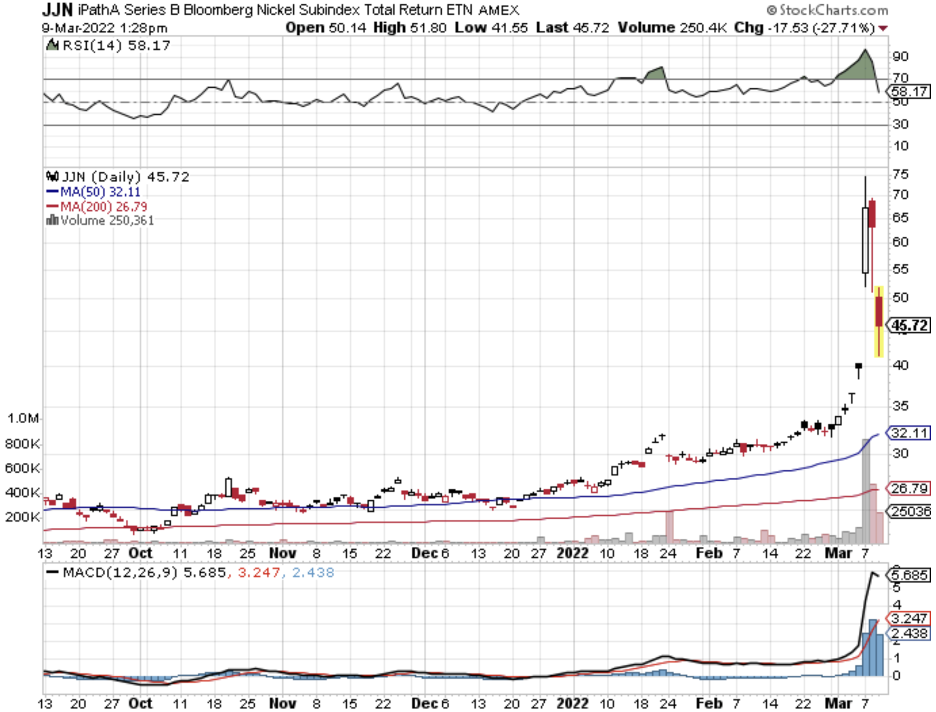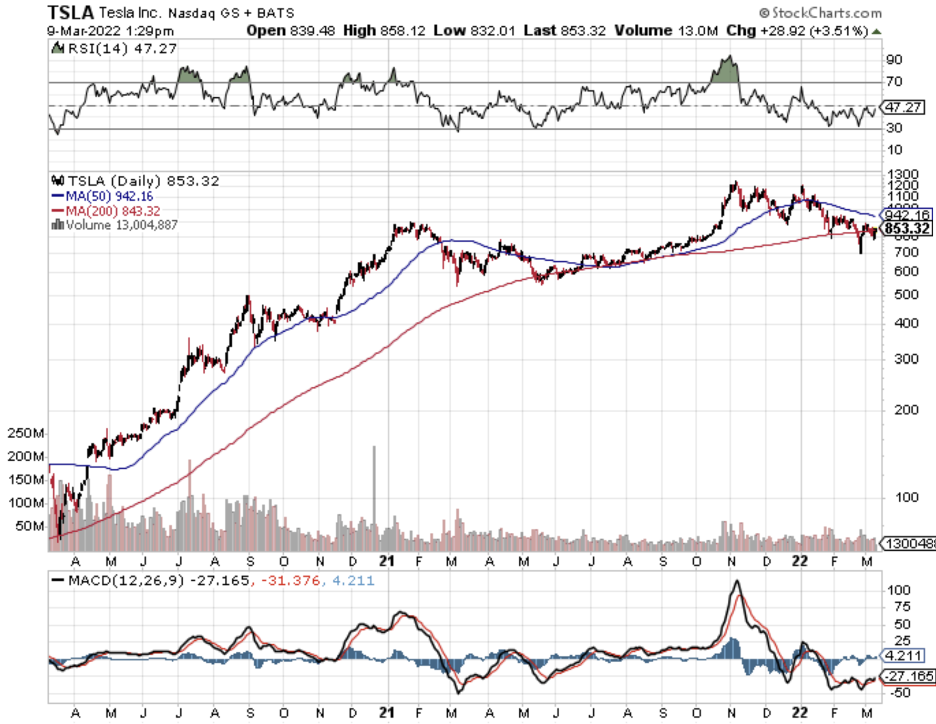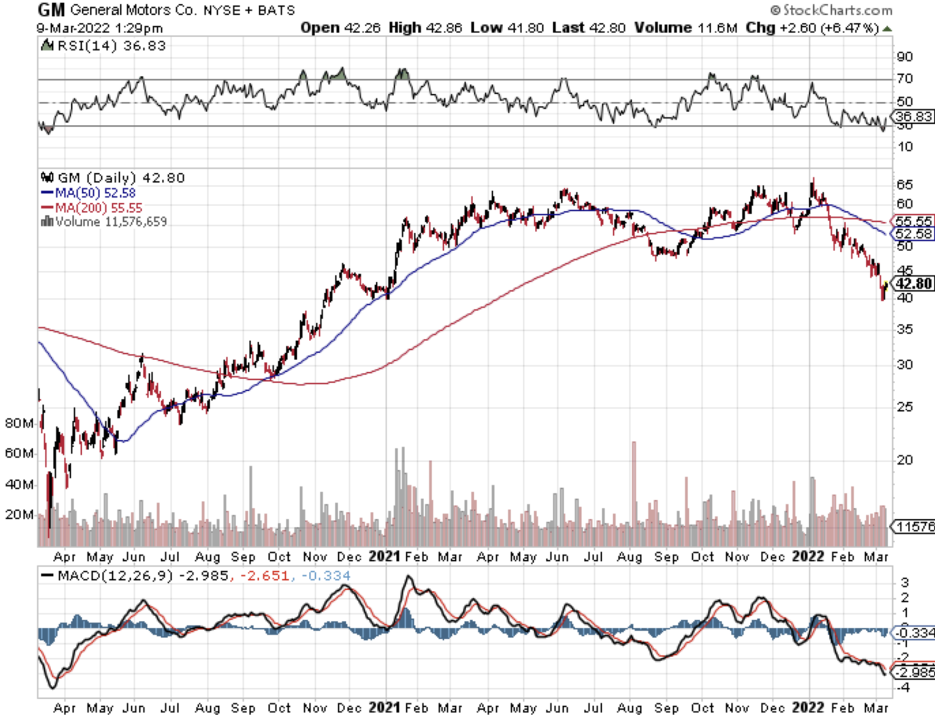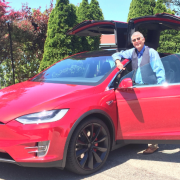Nickel (JJN) is essential for EV batteries, and that spells trouble for certain industries as the price of nickel explodes to the upside.
Projections between 2020 and 2037 reveal that global manufacturing of batteries for EVs and other new energy applications will rise tenfold.
That’s not a typo!
Recently, volatility was so high on nickel that London Metal Exchange, prompted a trading halt.
The price of nickel increased by 250% which many traders blamed directly on the war between Russia and Ukraine.
Unintended consequences have put shivers through the global economic system and higher prices of various types of metals will mean consumers will have less discretionary incomes.
Russia is one of the largest producers of nickel in the world, with miner Norilsk Nickel the number one producer of top-grade nickel globally.
If the metal were added to the sanctions list, it could severely shrink volume to Western suppliers and manufacturers.
EV batteries are one of the highest costs in producing an EV.
The price rise in nickel means that it will cost car manufacturers an extra $3,000 to produce the same car.
Costs are going up around the entire process of making an EV and the pain will be felt with a final sticker price substantially higher than today.
It is plausible that in 2 years we could experience a massive shortage which could exacerbate an already dire supply situation as demand continues to rise.
EVs are getting more popular as the quality of EVs produces gets better with each iteration.
No doubt Tesla helped popularize this type of car.
With the next biggest source of nickel being lower-grade Indonesian supply, and new nickel mines years away from getting online, the only logical conclusion is to bake in lower productivity from Western auto companies.
Ford (F) is planning to make 2 million EVs annually by 2026, GM (GM) hopes to sell 1 million EVs by mid-decade and launch 30 new EV models, and Stellantis plans to sell 5 million EVs by the end of the decade, with 25 new EV models on the way.
These companies are all catching up to Tesla (TSLA).
This will poo poo the momentum of the EV car movement temporarily which many believed would go into overdrive this year.
Once the business model supporting the case to make EVs becomes untenable, large car companies could pull back from these models until supply chains moderate.
Car companies aren’t in the business of building cars that lose money and now the unit economics have been thrown into chaos.
Uncontrollable costs to source raw materials for industrial battery makers such as LG Energy Solution, Panasonic, and Contemporary Amperex Technology Co will be passed to the end-user.
It will also make negotiations tougher with EV makers such as Tesla and Volkswagen. And it isn’t just nickel: Prices of cobalt and aluminum, two other key battery metals are grouped into this price surge as well.
U.S. President Joe Biden's solution for lower oil prices was to go out and buy an EV instead of buying gas at the pump. Well, that solution just became more costly and is rising by the day.
This effectively pushes the green movement further back and the high price of oil taking center stage is ruffling a lot of feathers for the American consumer that will have severe implications at the polls this November.
These costs headaches will also be a drag on EV stocks like Tesla in the short term because they simply won’t be able to deliver the volume of cars they planned to produce.







